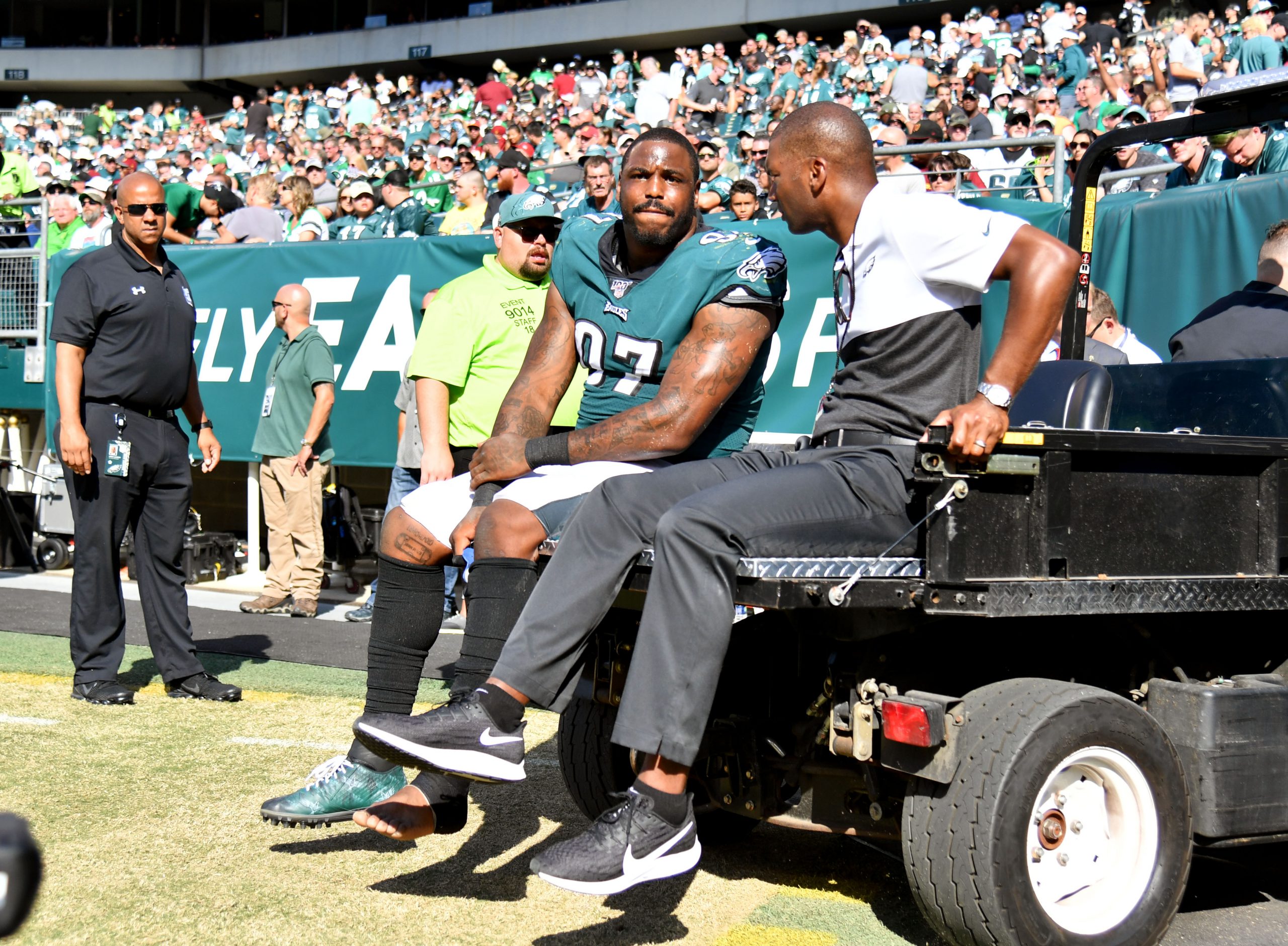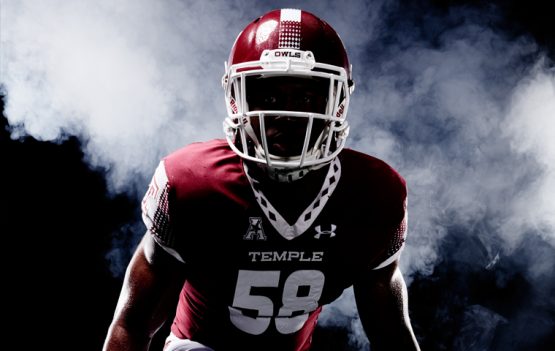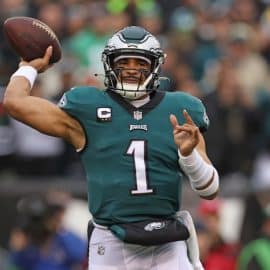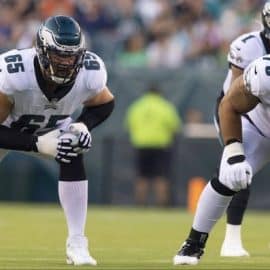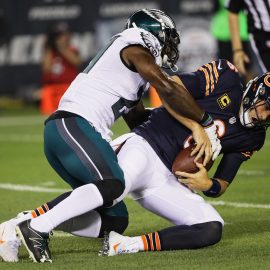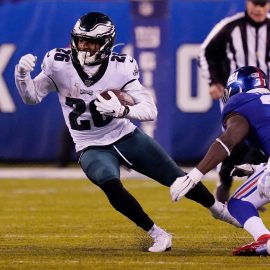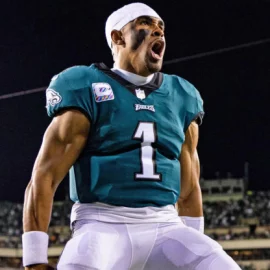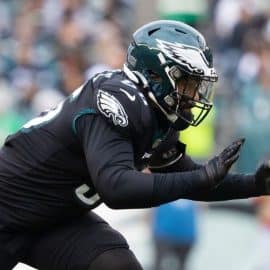We of the Eagles Eye community have been following our members’ health issues as well as the health of the team for a long time. Our community (or “the Bored” as it is known) is actually an outgrowth of the original gallery of posters who contributed mightily to Dave Spadaro’s “On The Inside” column at PE.com back in the days of the Reid/McNabb era. One of the original leaders of that crew of saucy commentators was The Great JB99, a former NCAA football player (fullback, special teams at Nebraska and Stephen F. Austin), who along with GK Brizer set the tone for the decade and a half of intelligent discourse and witty entertainment we have enjoyed here.
So, without getting maudlin or violating privacy, EYE wishes The Great JB99 a speedy recovery from a cardiac-related procedure he is undergoing at this time.
We also have another long-time poster, Philly Phan West, who is making steady recovery from a circulatory issue.
With our Comments section currently disabled, it is difficult to keep abreast of the daily challenges faced by our readers, so I apologize for the hearsay nature of these medical reports. Fortunately there are still email updates I receive from GK Brizer and others during this dark time.
The Eagles are going to be dealing with their own medical challenges very soon. The NFL is planning its return from the coronavirus pandemic — but nearly half of the country is battling frightening increases in cases; local economies are reopening from coast to coast, likely promising steeper spikes; and Arizona is scrambling to find hospital beds.
Darryl Slater at NJ.com produced a sobering report on the nature of the medical challenge of the proposed return of the Eagles to what they hope will be a full season in September.
“Even if the league can find a way to start the season, will it finish? Dr. Charlotte Baker, an assistant professor of epidemiology at Virginia Tech, doesn’t think so.”
“We were expecting a second wave to start in October, November. But with things going the way they are, this wave we’re in right now may not end. So you’re talking about a long-term consequence of what could happen if we don’t, as a country, get everything under control.”
The NFL this week sent teams its preliminary protocol for training camps, but many questions remain about what’s next, as the league and players’ union discuss starting dates for training camps and the length of the preseason. Meanwhile, many season-crushing “what-ifs” linger.
- Will players have to quarantine before camps, which are scheduled to launch in late July?
- How often will players be tested during camp and the season?
- Most importantly, what happens if a player tests positive?
- And how many positive tests can the league, or a team, withstand before canceling the season?
NJ Advance Media interviewed several medical experts to determine whether the NFL can safely return for training camps and games.
Dr. Allen Sills, the NFL’s chief medical officer, is more hopeful than Baker.
“It’s impossible to predict the future with certainty, but I personally remain very optimistic that we will be playing football this fall,” he said.
Baker said there’s no harm in the NFL trying to hold training camps, with the right precautions. Still, she remains skeptical about the season — especially if the league doesn’t take strong enough initial steps, like mandatory quarantines before camps begin. Without the quarantines, infected players could torpedo the season before it starts, she said.
“The disease doesn’t care that they’re elite athletes,” she said. “I don’t think the season is going to look the same as they think it might look. I think it’s more a function of how we’ve handled things [as a country]. Now, we’re getting this uptick in cases because we’re not having the best response about testing and mitigation of the disease.”
With spring practices wiped out by the pandemic, the NFL’s preliminary protocol centers on how team training facilities will operate during training camp.
Sills understands these guidelines alone won’t be enough, especially as returning college football teams are seeing positive cases pop up this month. Eight Alabama players have tested positive so far, which underscores the importance of early, widespread testing in the NFL this summer.
Under the league’s preliminary protocol, access to areas like the locker room and practice fields will be restricted to essential personnel such as players and coaches. The league is trying to keep players separated from people they don’t have to be around, like front-office employees.
Players and other essential personnel will answer daily questions about how they’re feeling, if they’ve had a temperature above 100.4 degrees, and if they’ve been in contact with an infected person. Players and staff will have to adhere to social distancing, so meeting and locker rooms likely will need to be rearranged. Most team and position meetings will continue to happen via video chat. And players must wear masks at the facility.
“It’s impossible what they’re asking us to do — humanly impossible,” Ravens coach John Harbaugh told Baltimore radio station 105.7 The Fan. “These are things the league and the [NFLPA] need to get agreed with some common sense. I’m a little frustrated with what I’m hearing there.”
He added: “I’m pretty sure the huddle is not going to be six-feet spaced. Are guys going to shower one at a time all day? Are guys going to lift weights one at a time all day? These are things the league and the [NFL]PA need to get a handle on … so we can operate in a 13-hour day in training camp that they’re giving us, and get our work done.”
The league told teams it is still working on a plan for testing and a strategy for infected players. Those details are critical, given the close-contact nature of football.
For the next set of coronavirus rules, Harbaugh hopes the NFL is “more realistic and practical in what they’re asking. But the way I’m reading these [initial] memos right now, you throw your hands up and you go, ‘What the heck? There’s no way this can be right.’”
Dr. Vincent McInerney — a team physician for Seton Hall sports and about 20 local high schools — said teams should test everybody with a nasal swab or saliva test once a week, to start. When games begin, it should be twice a week.
“If it’s negative, they still could have [the virus], but it’s less likely,” he said. “Then you’re going to go more by symptoms. It’s going to be a moving target. It’s a little tricky that way.”
McInerney thinks “two or three [cases] at the most” would halt a team’s operations, “because you’re in contact with so many other people on the team.” After two or three cases, “you’re in trouble, because that means maybe it’s going to be quickly, within a week, another five or six or seven or more,” he said.
Though Baker said “it would take quite a few people to shut the league down,” she is wary of what at least one positive-testing player on each team might mean.
McInerney said a mandatory, pre-camp quarantine is “necessary and feasible.” But Sills doesn’t sound convinced. He is seemingly focusing instead on educating players and coaches about responsible behavior leading up to camp.
“Making sure that everyone understands the role and responsibility that they have,” he said. “You cannot maintain an absolute quarantine over a six-month football season. So that’s where you start to look at other ways to mitigate risk. I think that quarantining alone is an insufficient way to mitigate those risks. That’s why we are looking at a broad-based [strategy].”
Sills doesn’t hide from reality. The coronavirus eventually will hit the NFL this season, he said.
“I fully expect that we will have positive cases, despite how stringent our protocols may be and despite everyone’s best efforts,” he said. “As long as this disease remains endemic in the population, we likely will have new positive cases.”
Add The Sports Daily to your Google News Feed!
